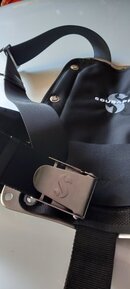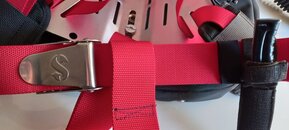I agree 'blow (tons of ballast) and go (shooting to the surface)' is very risky.
I did/do not understand that 'ditchable weight' meant that.
Yes, distinguishing:
A) ditch a ton and shoot up, ('blow and go")
B) drop a little to help start you up, and
C) drop some on the surface
Is very important.
I accept there is a difference.
It was not at all clear that your use of "ditchable lead" meant A, and not B or C. There had been one mention of a rescuer going for your weight belt tail, and one mention that 'dropping ballast is like plan D', to get up, but without specifying how much ballast so it could be A or B. Ok, they did start with swim, inflate, or drop. But that was one mention three posts before yours and you responded to the original post. I can see how this started in confusion on terms, but it really was not clear that you felt or feel that 'ditchable weight' only has the meaning 'blow (a ton) and go'.
Agree it is risky. (though less so than eventually breathing water)
This. Ditchable weight, when potentially needed to make swimming up possible in the event of a BC failure when wearing a large amount of weight, is responsible and potentially life-saving imo (whether that weight is there because they're over-weighted to begin with, or because they're compensating for lots of neoprene etc doesn't really matter imo). Ditching all your weight at the bottom (which is not how any of my classes were taught) when wearing a large amount of weight would be irresponsible and dangerous (but if that was the only way to get to the surface because you'd already screwed up then it's still a better option than drowning).





